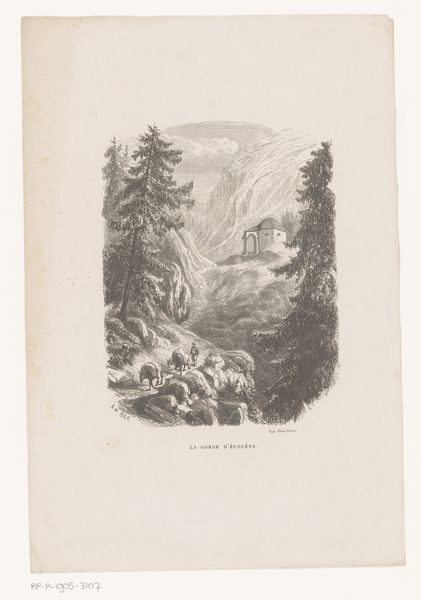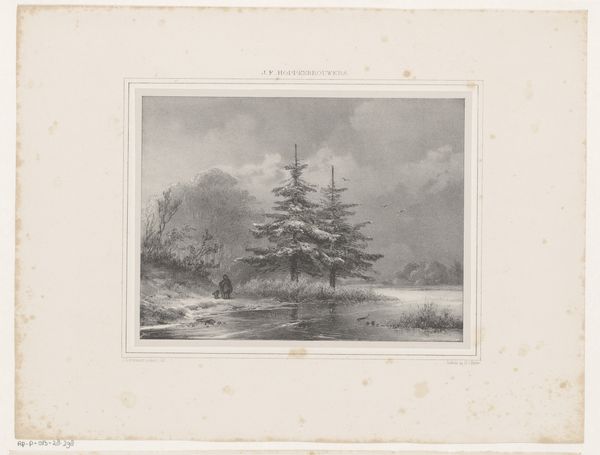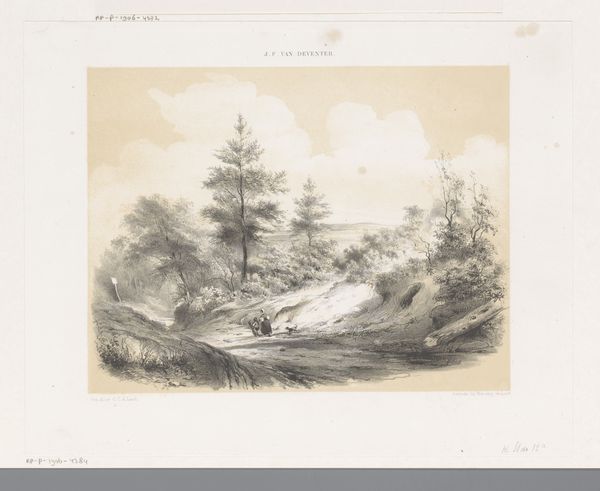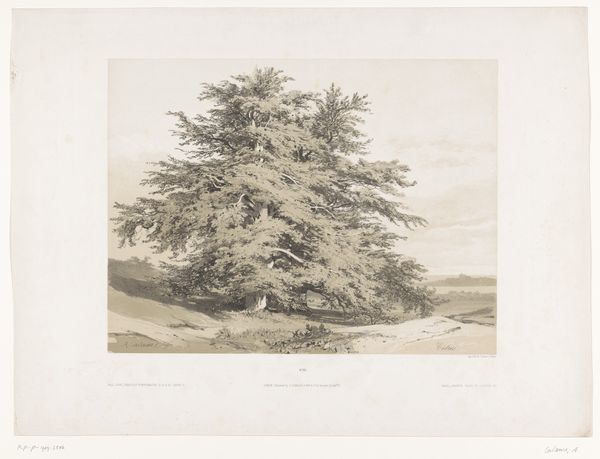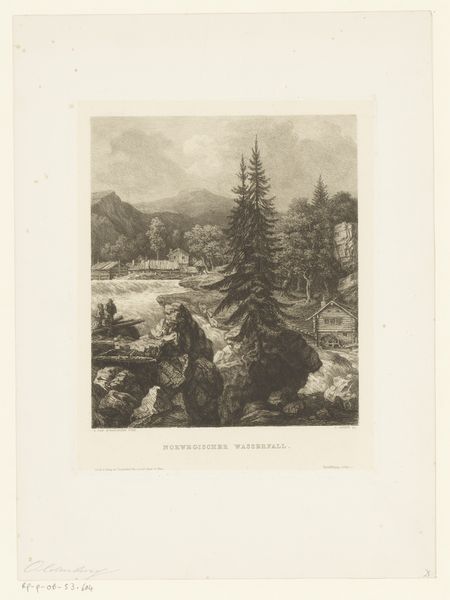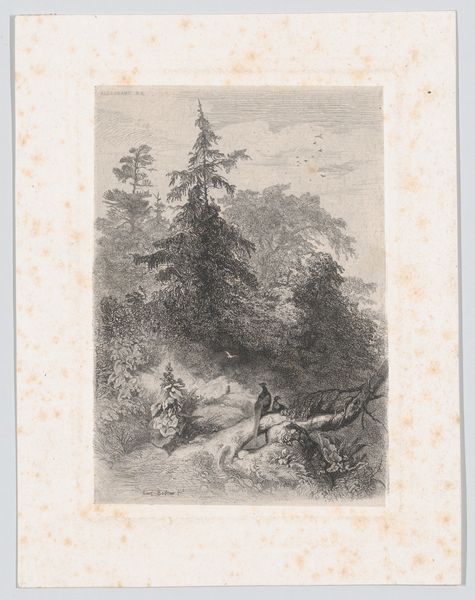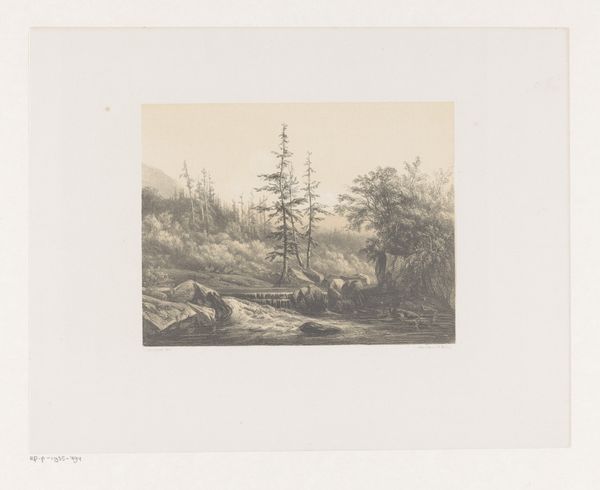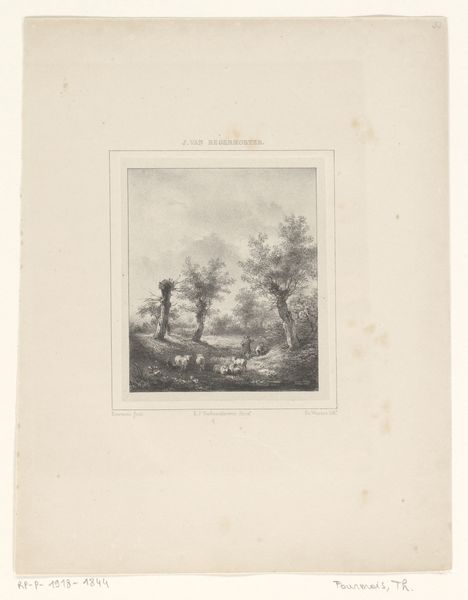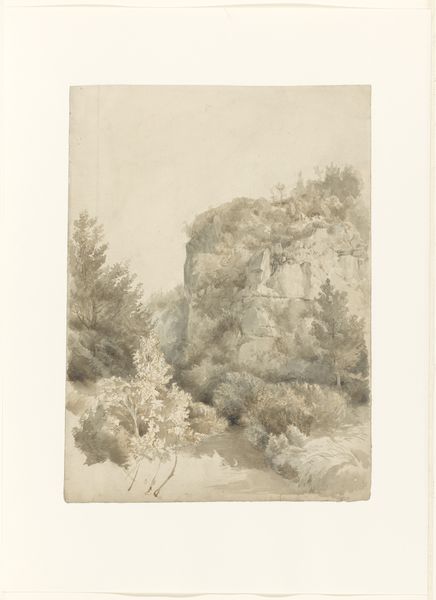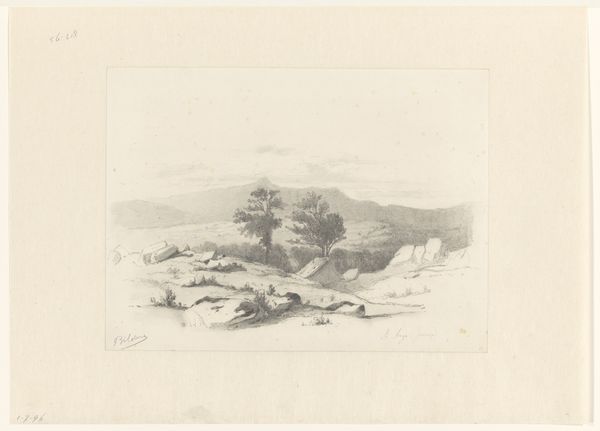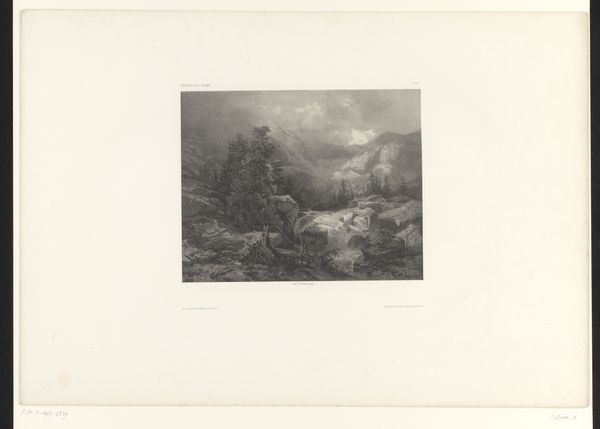
Dimensions: height 380 mm, width 315 mm
Copyright: Rijks Museum: Open Domain
Curator: Here we have Andreas Schelfhout’s "Winter Landscape with Pine Trees and a Man with Sled," an engraving dating from somewhere between 1847 and 1865. It’s currently held in the Rijksmuseum. Editor: Wow, it feels like a memory. Grey and muted, like something you almost remember from a dream. There's such a stillness. You can practically feel the crunch of the snow, can't you? Curator: Schelfhout was a master of capturing the Dutch winter. This engraving, made with such intricate detail, allows us to delve into 19th-century perceptions of landscape, specifically how romanticism influenced the viewing and depiction of nature. How do you think ideas around gender influence it? Editor: Good question. The lone figure with the sled, for me, it feels sort of…lonely. But in a resilient, working-class way. Is that weird? The whole composition feels inherently human, not about conquering nature, more like coexisting with it. Men working as equals among the snow. Curator: I don’t think so. If you analyze the engraving, especially how it utilizes the interplay between light and shadow, you see a stark portrayal of the socio-economic landscape of the time. The subdued palette underscores the potential hardship of winter, the constant threat of precarity looming large in rural lives. I wonder if we could perhaps place that with climate change too? Editor: Definitely! Plus, those muted tones, the kind of oppressive greyness... you feel the cold, you know? I reckon he might be saying we should remember the hardship of working-class individuals, while feeling gratitude for nature, because we cannot survive without nature, no matter the social class. Curator: I think that’s definitely at play here. Also the very act of choosing the winter landscape as worthy of depiction elevates these subtle class tensions as a conversation. It becomes about human interactions within a natural system. It gives value to working lives and environment, as one entity. Editor: Beautifully put. Thinking about it all this detail, those trees in the foreground especially, invite us to stop rushing around in the contemporary era. Curator: Yes. There's a profoundness to that simple connection. It serves to remind us of shared, historical ecologies and labour, something valuable in a world that continues to divide across environmental degradation. Editor: Exactly, it is not just about recording a beautiful scene but also engaging in cultural commentary. Thanks for pulling those insights out for me. Curator: Anytime! These images hold much more than meets the eye.
Comments
No comments
Be the first to comment and join the conversation on the ultimate creative platform.
